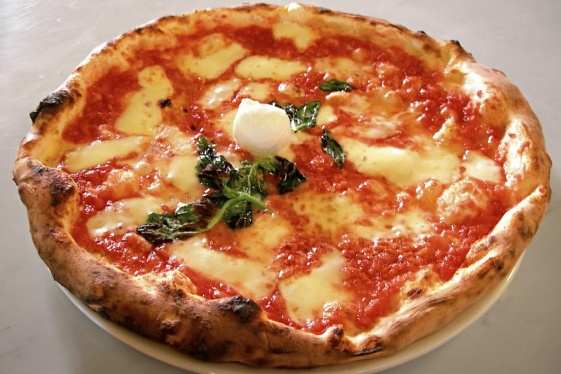Unesco Sites of Italy: Costiera Amalfitana
The Amalfi Coast is a marvelous example of a Mediterranean landscape with extraordinary natural and cultural value. Located along the Tyrrhenian coast of southern Italy, just south of Naples, it is an area of great natural beauty. It features steep cliffs and a jagged coast dotted with small beaches and pastel-colored fishing villages. The coastal...
READ MOREHow to make pizza like a Neapolitan master
When you think of Italy’s most memorable dishes, its beloved pizza will most likely be among your top five, if not top three, favourites. It’s an ultimate comfort food that has become an ever-growing obsession around the world. But what is it that makes pizza from Italy so special, and where do you find the very best? Like so many of the country’s...
READ MOREMemories of Italy: Basilica of Saint’ Apollinare in Classe
This unique Byzantine monument, Basilica of Sant’ Apollinare in Classe is not included in the standard tourist itinerary. When UNESCO inscribed eight Ravenna sites on the World Heritage List, it cited this basilica as “an outstanding example of the early Christian basilica in its purity and simplicity of its design and use of space and in the sumpt...
READ MOREUnesco Sites of Italy: Hadrian’s Villa
“Villa Adriana is an exceptional architectural legacy of the great Roman Emperor Hadrian. Built as a retreat from Rome between 117 and 138 AD, the villa was designed as an ideal city and incorporates the architectural traditions of Ancient Greece, Rome and Egypt.” Thus Unesco introduces Hadrian’s Villa, a World Heritage site since 1999. The remai...
READ MOREUnesco Sites of Italy: Venice and Its Lagoon
“Founded in the 5th century and spread over 118 small islands, Venice became a major maritime power in the 10th century. The whole city is an extraordinary architectural masterpiece in which even the smallest building contains works by some of the world's greatest artists such as Giorgione, Titian, Tintoretto, Veronese and others.” Thus writes Unes...
READ MOREUnesco Sites of Italy: Church and Dominican Convent of Santa Maria delle Grazie
Santa Maria delle Grazie is a church and Dominican convent in Milan. The refectory of the convent contains the world-famous mural of The Last Supper by Leonardo da Vinci, “whose work was to herald a new era in the history of art,” says Unesco. The refectory is an integral part of the architectural complex of Santa Maria delle Grazie, completed at t...
READ MOREUnesco Sites of Italy: Ferrara, City of the Renaissance, and its Po Delta
Ferrara, a pleasant, bike-friendly small town in Emilia-Romagna, has been a Unesco World Heritage site since 1995, along with the surrounding agricultural lands of the vast Po river delta. The area comprised within the Unesco site includes the medieval city within the ring of defensive walls that were erected starting in the 12th century, and subs...
READ MOREUnesco Sites of Italy: San Gimignano
About an hour south of Florence is the medieval town of San Gimignano, a Unesco World Heritage site since 1990. During the Middle Ages, its location in Val d’Elsa, 56 km south of the Tuscan capital, provided an important rest stop for pilgrims traveling to or from Rome on the Via Francigena. San Gimignano is famous today for its fortified tower hou...
READ MOREUnesco Sites of Italy: The Trulli of Alberobello
The trulli are historical limestone dwellings now mostly converted into museums or boutique hotels, found in the southern Italian region of Puglia. Unesco inscribed them into their World Heritage List in 1996, describing them as “remarkable examples of drywall construction […] The trulli are made of roughly worked limestone boulders” collected from...
READ MOREUnesco Sites of Italy: Florence
Inscribed on the Unesco World Heritage List since 1982, the historic center of Florence is defined as a “unique artistic realization, an absolute chef-d’œuvre, the fruit of continuous creation over more than six centuries.” In addition to its numerous museums, with the Uffizi Gallery renowned for being the oldest museum of modern Europe, Florence b...
READ MORE











